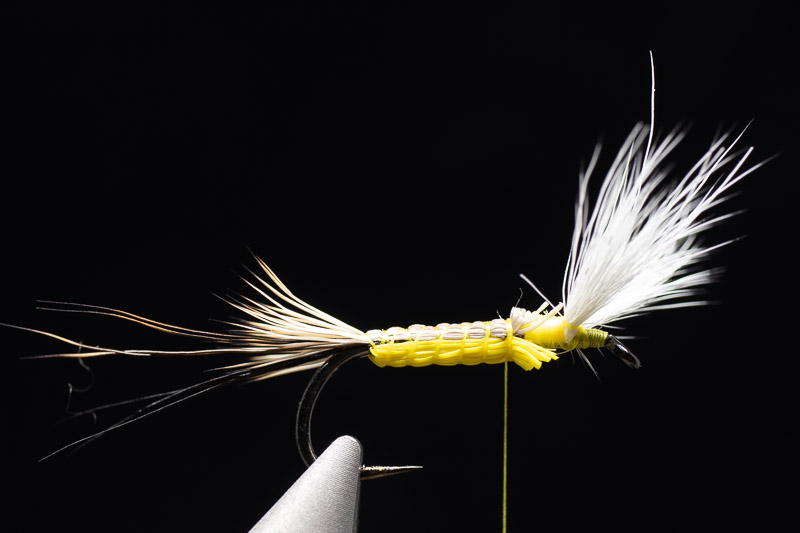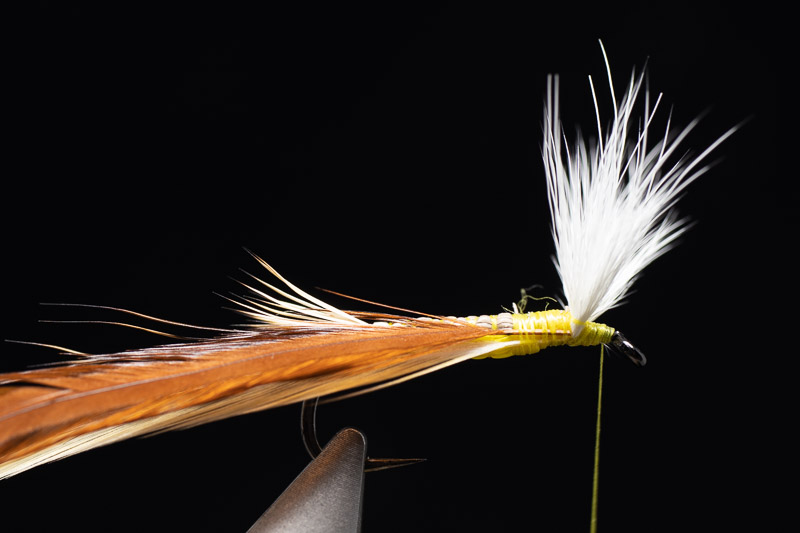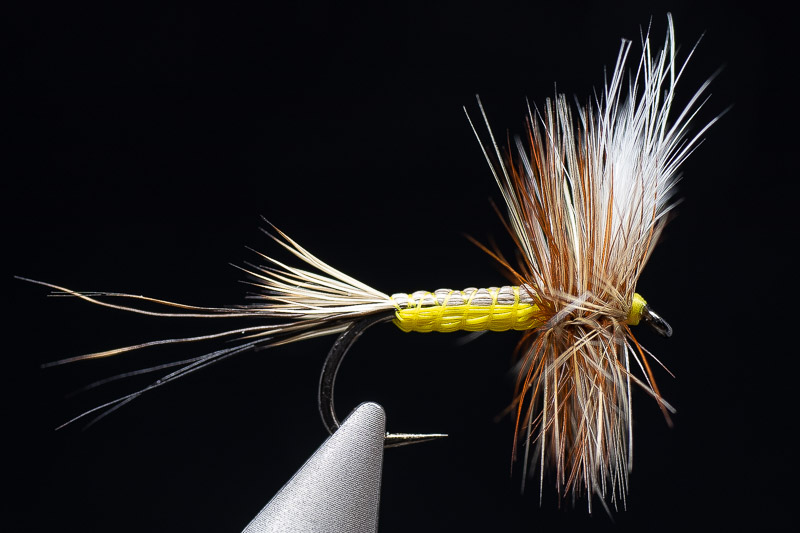
The fly tying season is well underway and everywhere flies are tied and the boxes are filled for the upcoming season and for the adventures out by the water.
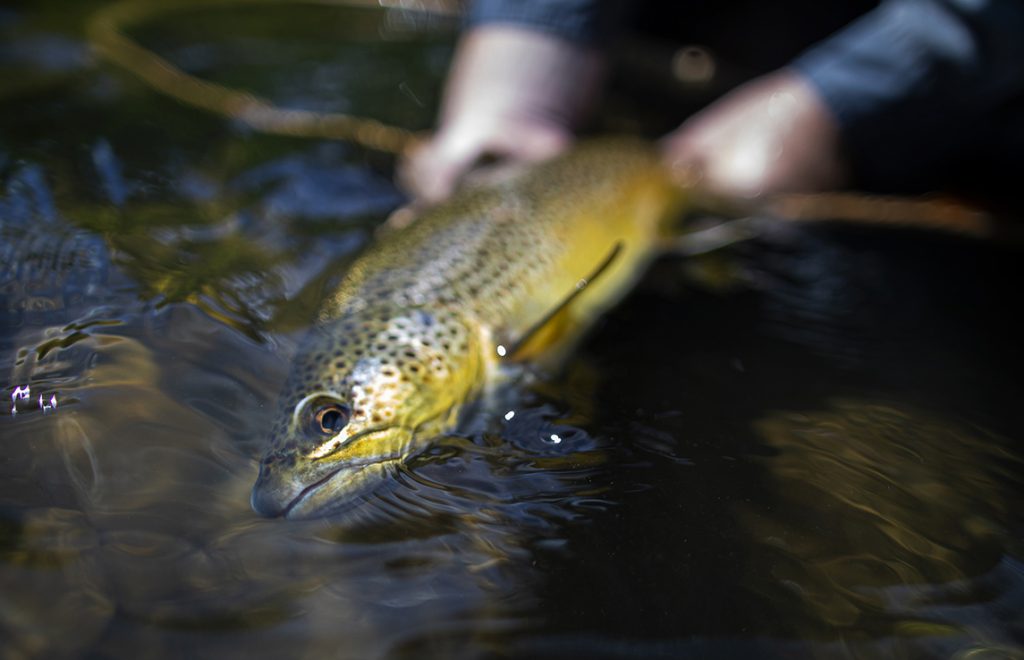
New techniques and materials are tried, tested by and our eternal hunt for the perfect fly is the drivingforce when we sit behind the vise – tying and dreaming away. One of the highlights for trout fishermen in particular is when the large mayfly hatches. They can cause even the largest and most shy trout to lose their caution. This is where the chance of a real trophy trout on dry fly is present. There are countless imitations of both the Ephemera Danica, the Ephemera Vulgata and the different Hexagenia species and every trout fisherman anywhere in the world has their own favorite. One of the most famous patterns is the big Hexagenia Mayfly which originally comes from the American flytyer, flyfisher and author Kelly Galloup who has created this variegated pattern which has the characteristic shape and matches the colors of the insects.

We have had the skilled Swedish flytyer and troutbum Joel Skogshall to tie The Troutman Hex and you can see step-by-step below.
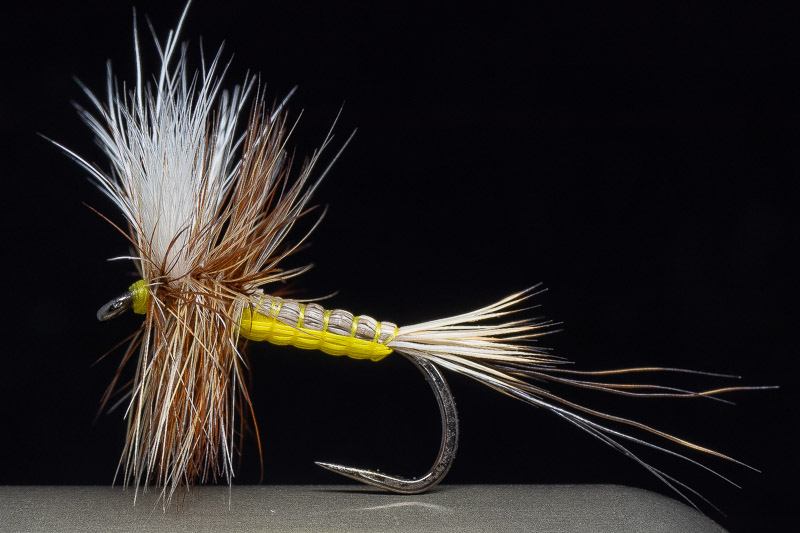
The Troutman Hex
Hook: Ahrex FW571 – Dry Long Barbless
Thread: Yellow
Body belly: Yellow bucktail
Body back: Natural deer hair
Tail: Moose body hair
Wing: White calf tail
Hackle: Brown and dun hackle
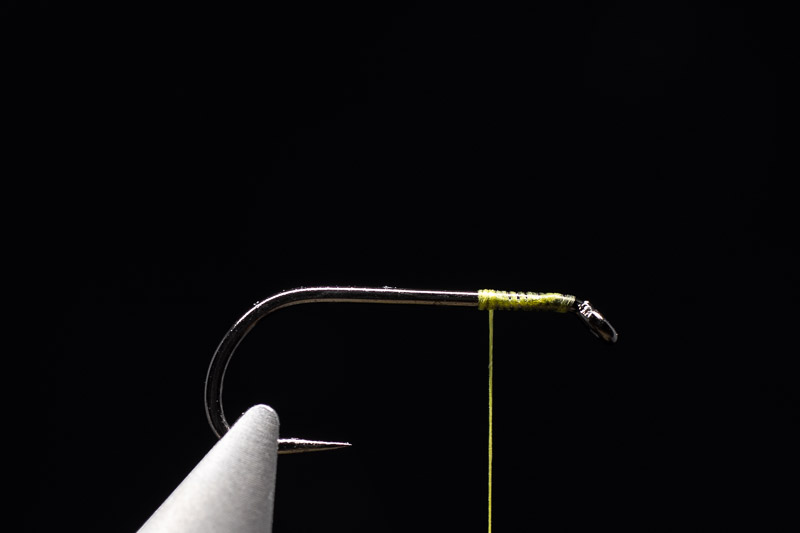

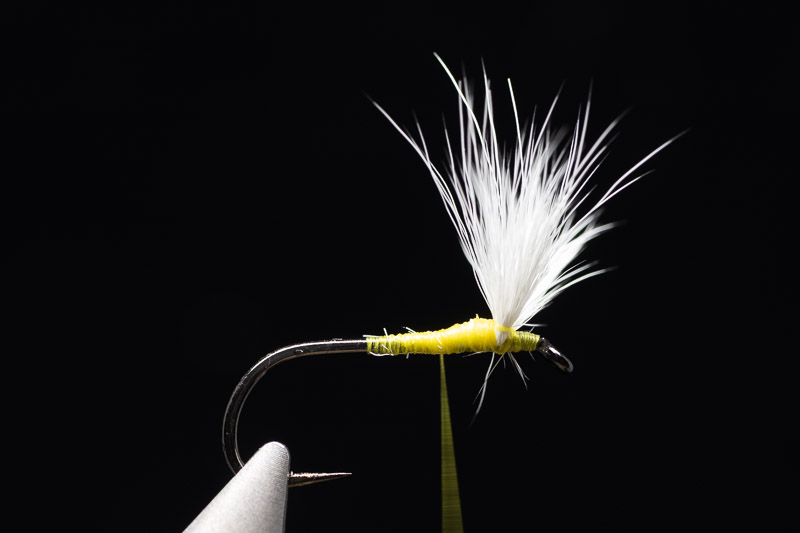

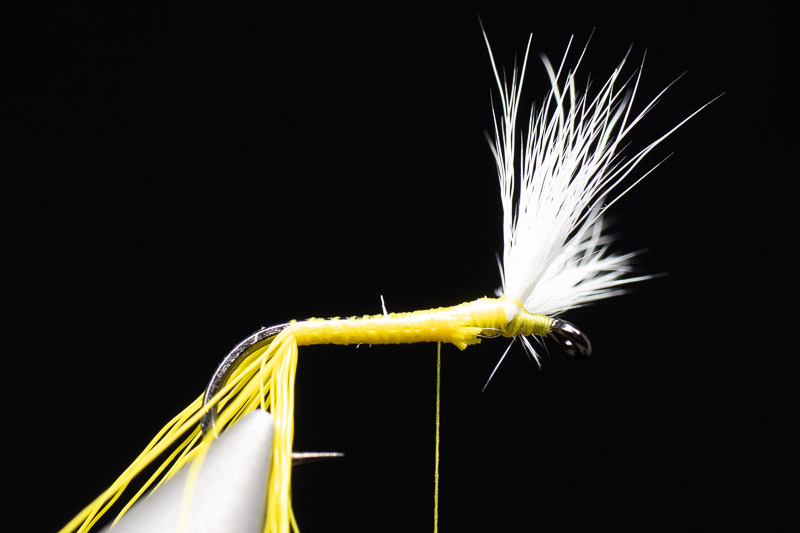
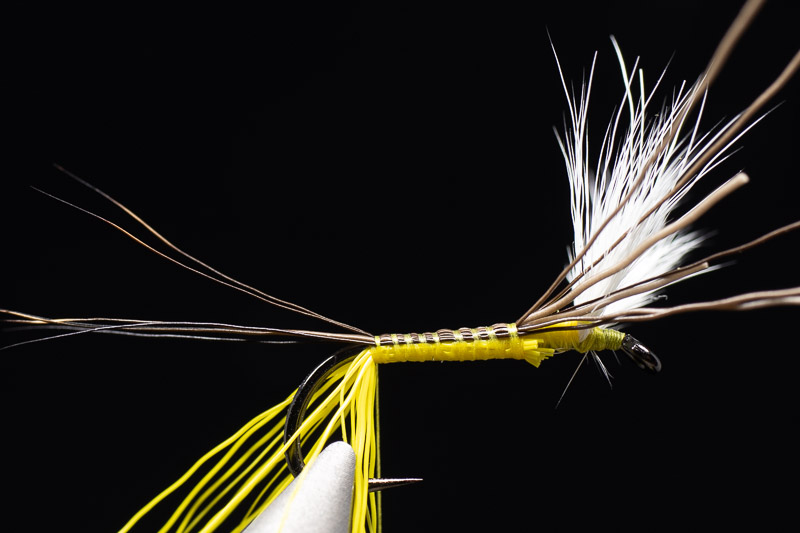
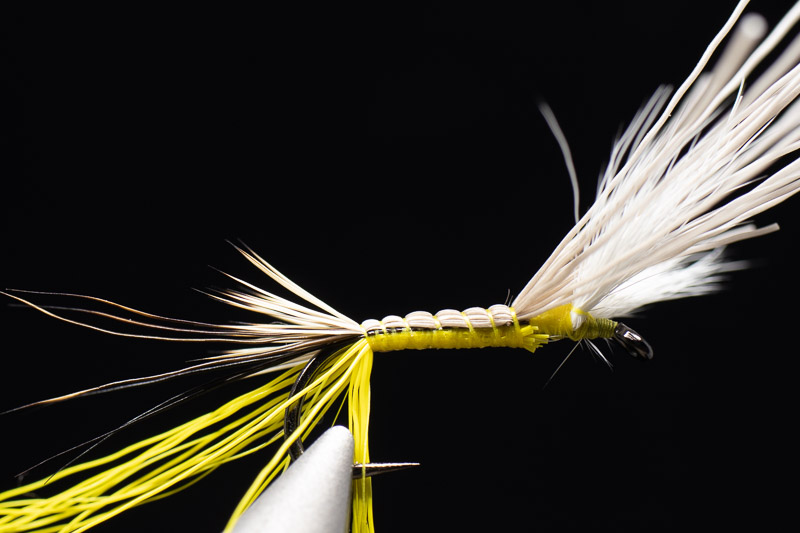
The upper side of the deer-hair is attached from the wing and backwards to the tail in open turns on the top.
